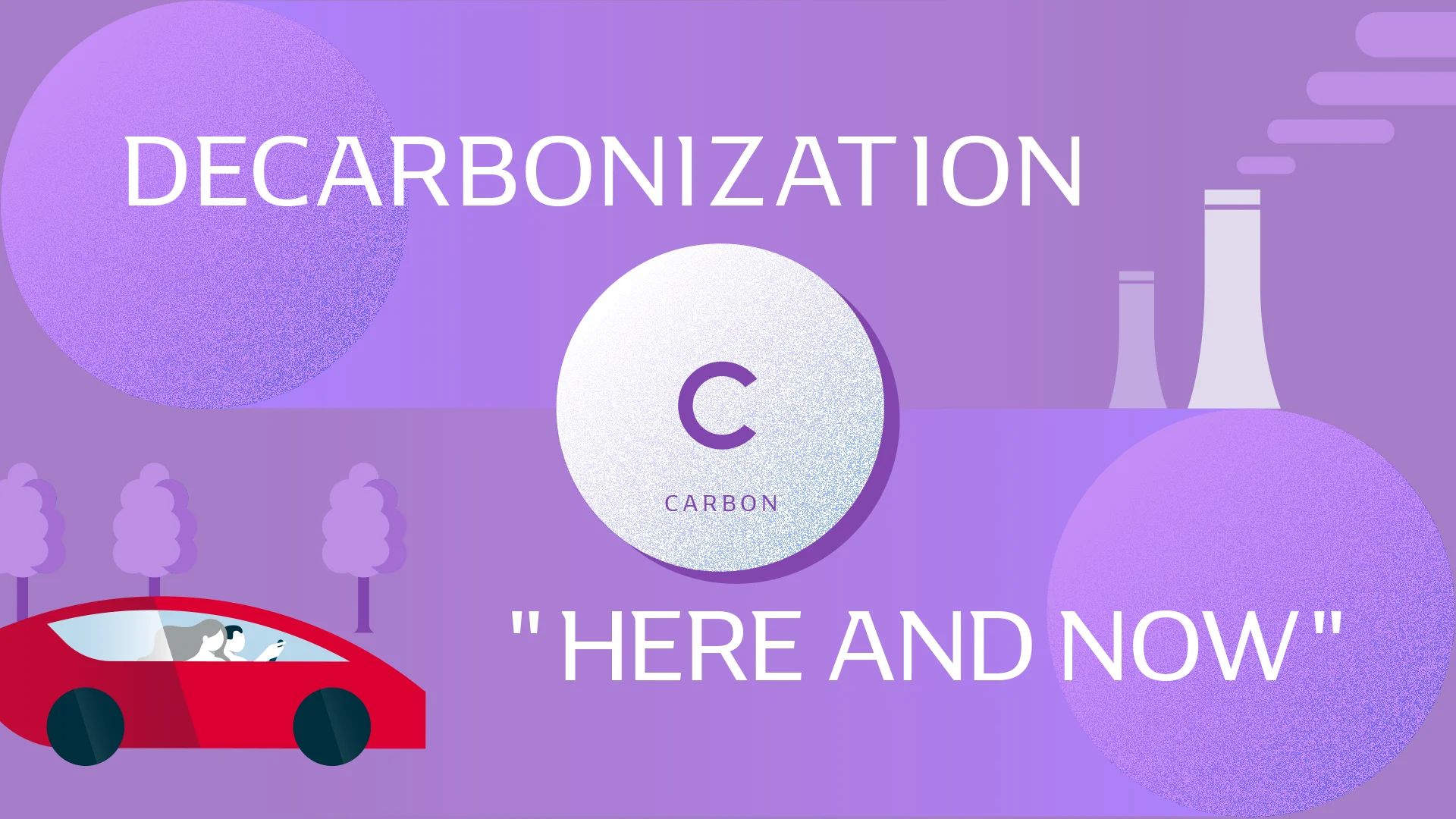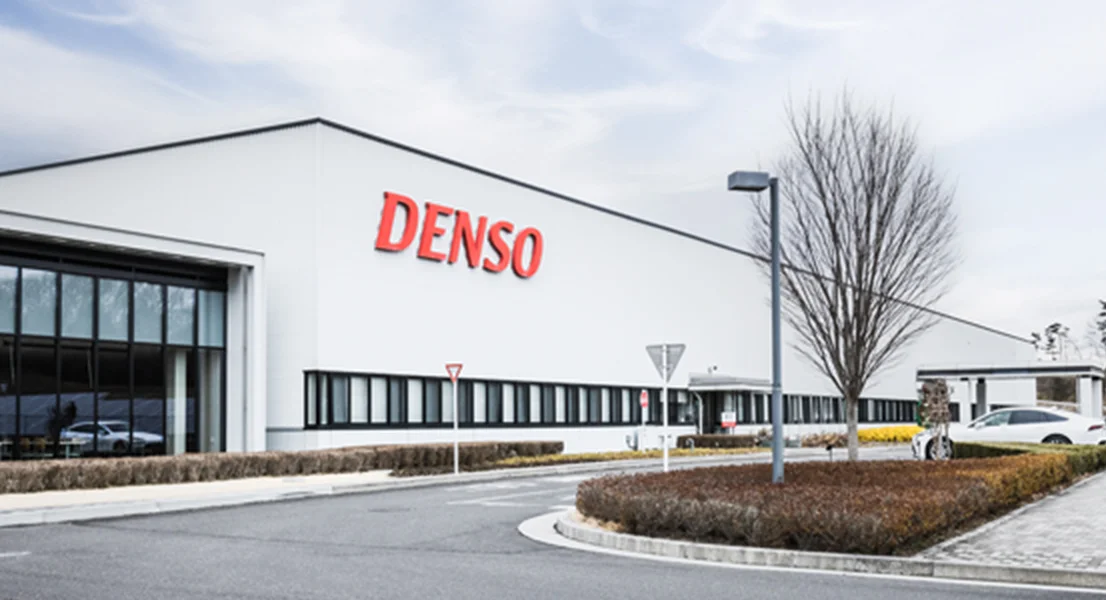

Jun 6, 2023
CAREER & LIFELeading the way to carbon neutralitythrough the power of design
The role of a product designer who demonstrate value in the organization
By meeting outside of the workplace with ambitious, hard-working associates at DENSO—as well as those who just seem to be fascinating individuals—it’s possible to break down the barriers of formality and talk openly, listening to their heartfelt concerns along with their unfiltered dreams and goals.
In this “Interviews with Employees Who Get Results” series, we talk casually with a wide range of professionals at DENSO to learn what truly drives them in their work, as well as their ambitions and dreams.
For this interview, we talked with Gen Orikasa, who designs DENSO products for realizing carbon neutrality. He has been in charge of a variety of product designs, including equipment that produces hydrogen (SOEC) or uses hydrogen to generate electricity with high efficiency (SOFC). The scope of his work covers not only products but also a wide range of design areas such as business branding and visualization to communicate technology in an easy-to-understand manner.
Orikasa has always loved drawing pictures since he was a child, and even dreamed of becoming a manga artist.
The future he envisions has been expanding, and since joining DENSO, he has continued to let his pen run across paper dreaming of "solving social issues through the power of design”.
“The designer's job is not only drawing beautiful and cool pictures”.
Orikasa is willing not to express himself but to design something for the sake of someone. What kind of society does he envision?
We interviewed him about how he perceives product design and his unwavering stance as a designer.
Contents of this article
Designer's job is to present essential solutions

─── First of all, please tell us about the project you are working on, Mr. Orikasa.
Orikasa:I am in charge of leading the design for the carbon neutral project. While mainly specializing in product design, I am also involved in facilities and equipment design for hydrogen production, high-efficiency power generation, and CO2 capture and storage.
Depending on the situation of use, the durability, maintenance, and usability of facilities and equipment are also considered important aspects. For this reason, I sometimes join the discussions from the planning stage if necessary. I am always looking for ways to ensure that the product design is in line with the objectives, and that the approach is appropriate, and what kind of design is best suitable for achieving them.
I believe that it is the designer's role to lead the project to essential solutions through questions and suggestions.
─── I see. So, you are sometimes involved in discussions even before the design begins to take shape?
Orikasa:Yes. I think that visual impressions such as "cool" and "stylish" are often different depending on personal preferences. But in order to create a single product as a company, it is necessary to make decisions as a group. “Why is this the best shape?”, "Why do we need this device?", “What is ‘unique to DENSO’?” I try to design any products logically like this, while organizing decision criteria and design processes.
─── Are there any product designs that have left a lasting impression so far?
Orikasa:Yes, as for a familiar product in your daily life, I once designed a bar code scanner used in convenience stores. As you know, we can read the product information by holding it over bar cords.
The first thing I did was to visit various convenience stores and observe the hand movements of store clerks there. They were simple movements of scanning one item after another of different shapes, such as plastic bottles, bentos, and rice balls. However, when I observed them carefully, I could see some issues, such as a large twisting of the wrist or difficulty in picking up barcodes.
What should be improved to make their work easier?
After many trials and errors, I was able to develop a new barcode scanner that reduces muscle fatigue by developing a design that allows access from either side of the grip at an even angle.
─── That's wonderful!
Orikasa:Making a product is not the end of the process; there are always people beyond the product. That is why it is so important for me to see how they actually use the products and to listen to their voices.
I want to demonstrate the power of design "for the benefit of others"

── What originally made you decide to pursue a career in design?
Orikasa:I have always loved drawing pictures ever since I was a child, and I wanted to be a manga artist in the future. I used to draw pictures in my free-use notebook, and my classmates were surprised to see my pictures and said, "Wow! That's amazing!" They sometimes waited in line to ask me to draw pictures during a break time (laughs).
I believe that such happy experiences that made others happy by drawing pictures has led me to the present.
I specifically started to study product design when I was in college. As I studied art more deeply as an academic subject, I came to see that art is one thing and design is another because the former is for expression of who you are, and the latter looks ahead to the purpose.
─── I see that was your background before you make it to become a product designer!
Orikasa:Currently, I am mainly in charge of the carbon neutral business, but in fact, it is no exaggeration at all to say that my childhood dream came true.
─── Which means?
Orikasa:I have always been interested in the environment and energy issues ever since I was a child. I had a sense of crisis because I had ever seen and heard news reports saying that one day fossil fuels would run out. There was a time when I wanted to become a scientist or an inventor to solve energy problems when I grew up.
─── So, this was a topic of great interest to you.
Orikasa:As a result, I decided to pursue a career in design, but I also feel that the work of a product designer, such as designing a system to solve a problem or thinking about a new approach, is close to the field of invention.
─── You are gradually giving shape to the dreams you had in your childhood!
Orikasa:Yes, the thought of "benefit for others" is the most important driving force to me after all. There are also people in this company who are seriously trying every day to achieve carbon neutrality, not to end it up as a pipe dream. When I see such engineers and sales members, no matter how difficult it is, it motivates me with the thought of " I want to do something to give it shape for the sake of them!” and “I want to be a part of this project and make it a success!”. The enthusiasm among the members motivates me to create something better. Such a virtuous cycle has been born.
The role of a designer, who demonstrates value in the organization

Orikasa:Even now, as an adult, I often draw manga and illustrations. I find that working with my hands helps me to organize and refresh my mind, and I can better understand the content of a meeting. When my mind is constantly connected to drawing, it is easier to come up with ideas.
─── I also admire your attitudes of enjoying what you would like to do while making the most of it in your work.
Orikasa:Thank you very much. However, when I first joined the company, I was at a loss for how I can demonstrate my value within the organization. Most of my colleagues were highly educated and had graduated from faculty of science and engineering and graduate school of science, and we were involved in the professional business field in the company, such as research, development, design, production technology, and quality assurance. I couldn't keep up with them at all during the new employee training (laughs). Even though I was skilled in design, I honestly did not know how to connect those strengths with the company business.
─── I see. Then how did you find a breakthrough?
Orikasa:I diagramed details of discussions on paper at a meeting. I was moving my hands to organize what I was thinking, though I was not told to do so by someone. Then, when I had a chance to speak, I explained the details of discussions visually. Then, I surprisingly received a positive response, "That makes it easier to understand!”
─── Wow!
Orikasa:When the discussion became complicated or when it was difficult to form a consensus there, I could move the discussion forward by visualizing and schematizing an abstract concept. Though a topic of discussion was challenging, I could use the power of design to help my discussion group to make a logical decision. It was a successful experience that I could discover my own strength.
Now, when a meeting starts, I’d stand by a whiteboard and help organize the discussion.

─── It was a moment when you were able to demonstrate your strengths in the organization!
Orikasa:Yes, exactly. I thought I found the place where I belong. As we tackle global challenges, such as carbon neutrality, it may be decades before we see any results. That’s why I think it is necessary to feel small sense of accomplishment and to have the feeling that we are useful for our organization in order to accumulate our actions each and every day.
If you can connect your "like" with social issues

───Lastly, please tell us about the Will (dreams and aspirations) that you envision.
Orikasa:I want to realize "the future that lies ahead" through my profession of design. Rather than a personal thought to design what I want to design, my passion to solve energy and mobility issues comes first. I want to send out designs to the world that will benefit someone. With this simple wish in mind, I want to continue to take on the challenge.
That is why I believe that the most important thing is not the superficial beauty of the products, but the facts which form its foundation. As design is directly related to the corporate message, and it is also involved in the challenging fields, such as environmental issues and carbon neutrality, I want to keep in mind the essential design.
─── I feel your unwavering sense of values.
Orikasa:On the other hand, it may take time to find how the company's business and your own Will (dreams and aspirations) are connected. In that case, I would like you to value "working for yourself" as well.
That is because I can work on my tasks hard by actually feeling that I am getting closer to the society I want to realize through the design I love.
Of course, I am happy when people are pleased at or need what I work on, and I also have to demonstrate value in my work.
But I also feel happy at the moment when I draw pictures with my pen in my sketchbook as I did it in my childhood. It is important to feel happy about something however small they are, such as "I designed something that I am satisfied with.", "I was able to stick to this part well." and "I drew cool lines.”
I would like everyone to cherish affirming the work they are doing. If it leads to contributing to the company and society, I think it will make both you and those around you happy.
REACTION
Changing your "Can'ts" into "Cans"
Where Knowledge and People Gather.





Leave a comment